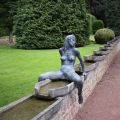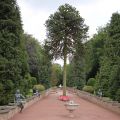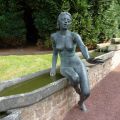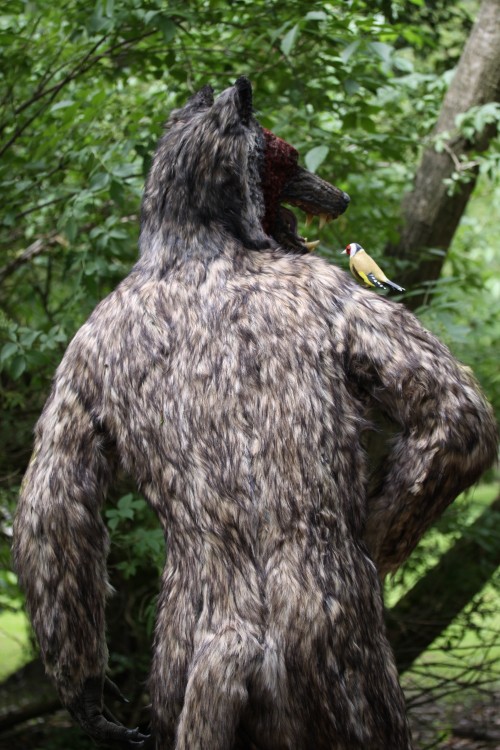SCULPTURE
Although the 'werewolf' is an old European mythology he is probably better known from 'Hollywood' film productions. According to this cinematic history his appearance fits well to the Chateau de Jehay (see pictures below). In Werewolf - Goldfinch the potential beast is in an inner dialogue with a usually shy wild bird on his shoulder. The scene can bring Francis of Assisi to mind; he was often pictured with birds or a tamed wolf to express his harmony with the creation and god. On top of that is the European goldfinch in Christian symbolism connected to the Passion of Christ and salvation. One reason, beside the read colour on the head, is the bird’s preference to feed on the seeds of thistles (with thorns!).
The constellation between the werewolf and the birds leaves us with the question behind if the colourful bird might be able to control the evil creature. Or tries the beast to imitate the colours of the bird as a sort of camouflage in order to hide his real intentions. This and the fact that historical anthropologist understand werewolf narratives as a metaphor for all kind of forbidden forms of male sexuality also connects the work to the female nude sculptures in the castle’s park. They are the works of Guy van den Steen, the last private owner of the castle. His child- sized female bronze figures (and their poses) may also be harmless but might hide far darker intentions.
The work was made in the scope of the exhibition Mythes, Fantasmes, Histoires, Singulières, Jehay castle, Amay, Belgium, 2011




photography: Helmut Dick






